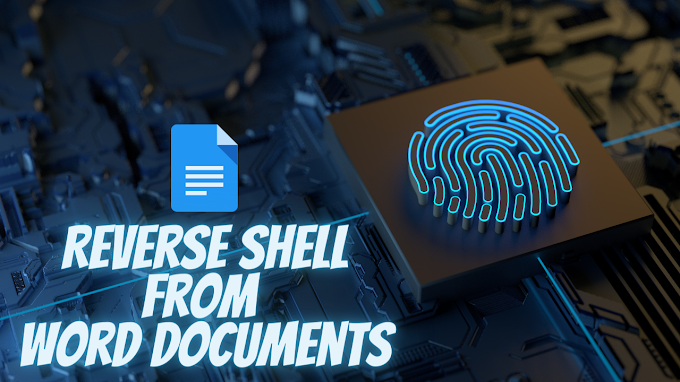Artificial Intelligence (AI) has emerged as a transformative force, revolutionizing industries and enhancing various aspects of our daily lives. As an ardent AI enthusiast, I have been captivated by the potential of this technology to drive positive change. However, my recent exploration led me into a dark realm of AI - the discovery of WormGPT, a malicious version of ChatGPT. Intrigued by its ominous implications, I embarked on a profound journey to unravel the depths of WormGPT and explore the unnerving world of AI in malevolent hands.
Unveiling the Menace
During my research, I stumbled upon WormGPT, a sinister chatbot specifically engineered to respond to malicious queries. Unlike its legitimate counterparts, WormGPT was designed to empower cybercriminals, enabling them to execute sophisticated phishing and business email compromise (BEC) attacks. The revelation that this malevolent tool was available for sale on hacker forums raised serious concerns among cybersecurity experts.
WormGPT's creation heralded a new era of AI-driven cybercrime, exploiting the power of generative models to orchestrate fraudulent schemes with unprecedented ease and scale. My investigation into the genesis of WormGPT led me to question the ethical implications and potential consequences of such dangerous AI applications.
Diving into the Abyss
Intrigued by the dark secrets lurking within WormGPT, I delved deeper into its core functionalities and capabilities. The lack of safeguards against harmful queries made WormGPT an ideal tool for both novices and seasoned cybercriminals alike. The ease of use and versatility of WormGPT posed significant challenges for cybersecurity experts attempting to counter its malevolent potential.
Understanding the inner workings of WormGPT shed light on the blurred lines between ethical and malicious AI applications. The malicious intent behind WormGPT underscored the pressing need for stringent guidelines and responsible development practices in the realm of AI.
Harnessing the Power of Generative AI
My journey into WormGPT's dark realm prompted me to explore the broader landscape of generative AI. While this technology offers numerous benefits, it also comes with inherent risks when misused. Malicious actors can leverage generative AI, such as WormGPT, to produce convincing phishing emails, disseminate fake news, and even create sophisticated malware.
As AI continues to evolve, the ethical dilemmas associated with its applications become more pronounced. The potential for malevolent AI-driven cybercrime raises important questions about accountability and the need for collaborative efforts to protect against emerging threats.
Unmasking the Realities of AI-Driven Cybercrime
Venturing further into the world of AI-driven cybercrime, I encountered real-world examples of malicious applications. WormGPT's ability to automate fraudulent emails and tailor attacks to specific targets proved to be a formidable weapon in the hands of cybercriminals. The escalating sophistication of such AI-powered attacks posed significant risks to individuals and organizations alike.
As I unraveled the complexities of AI-driven cybercrime, I realized the urgent need for innovative defense mechanisms. The cat-and-mouse game between cybercriminals and cybersecurity experts underlined the necessity for robust preventive strategies and swift responses to thwart malicious AI applications.
The Identity of the Creator
Unmasking the identity of the creator behind WormGPT shed light on the motivations and intentions of those developing malicious AI tools. The open-source origins of WormGPT raised questions about the responsible use of AI models and the potential risks of allowing unchecked access to powerful generative AI technologies.
The revelation of WormGPT's origins also emphasized the significance of AI ethics and the need for transparency and accountability in AI research and development. Collaborative efforts by the AI community and policymakers were essential to ensure responsible AI use.
How WormGPT is Utilized
In my quest for a comprehensive understanding of WormGPT's impact, I delved into the hacker forums where this malevolent chatbot was accessible. These dark corners of the internet served as a glimpse into the clandestine world of cybercriminals, where they exchanged tips, collaborated, and leveraged WormGPT for nefarious purposes.
The existence of platforms offering easy access to WormGPT highlighted the need for stringent regulations and increased vigilance to prevent the proliferation of malicious AI tools. The potential consequences of unregulated access to such technologies were a cause for concern and called for a collective response from the AI community.
Ethical Dilemmas
As I immersed myself in the intricacies of WormGPT and its malevolent applications, ethical dilemmas surfaced. The misuse of AI technologies posed significant challenges to the ethical foundations of AI development. Responsible AI practices, transparency, and adherence to ethical guidelines were essential to ensure the responsible deployment of AI models.
My exploration into the ethical dimensions of WormGPT underscored the need for interdisciplinary discussions, involving AI researchers, ethicists, policymakers, and industry leaders. These discussions were crucial to address the complex ethical dilemmas arising from AI-driven cybercrime.
Defending Against the Shadows
Equipped with knowledge and insights, I sought solutions to defend against AI-driven cybercrime. Collaboration between the cybersecurity community and AI researchers was vital to stay one step ahead of cybercriminals. Strategies such as enhanced email verification procedures, comprehensive BEC-specific training, and a cautious approach to interacting with emails and links were instrumental in mitigating the risks posed by WormGPT and similar AI tools.
Embracing Ethical AI for a Safer Tomorrow
My journey into the dark realm of WormGPT has been transformative. As an AI enthusiast, I am more determined than ever to advocate for the responsible and ethical use of AI. The existence of malicious AI tools like WormGPT serves as a stark reminder of the ethical challenges we face in the AI era.
By promoting transparency, collaboration, and responsible AI development, we can create a safer digital landscape. The collective efforts of the AI community, policymakers, and society at large are essential to ensure that AI-driven innovations benefit humanity and steer clear of malevolent AI creations. Embracing ethical AI practices will shape a future where AI is a force for good, free from the shadows cast by malicious AI tools.
Thank you for visiting the blog, reading, and expanding your knowledge. If you enjoy the content, please consider following me and subscribing to my YouTube channel.
If you require any assistance, need solutions or clarifications on any topic, or wish to show your support or provide suggestions, please leave a comment below or contact us via email. We are also excited to announce new blog posts, so keep an eye out for those. Until then, have a wonderful life. Goodbye.








